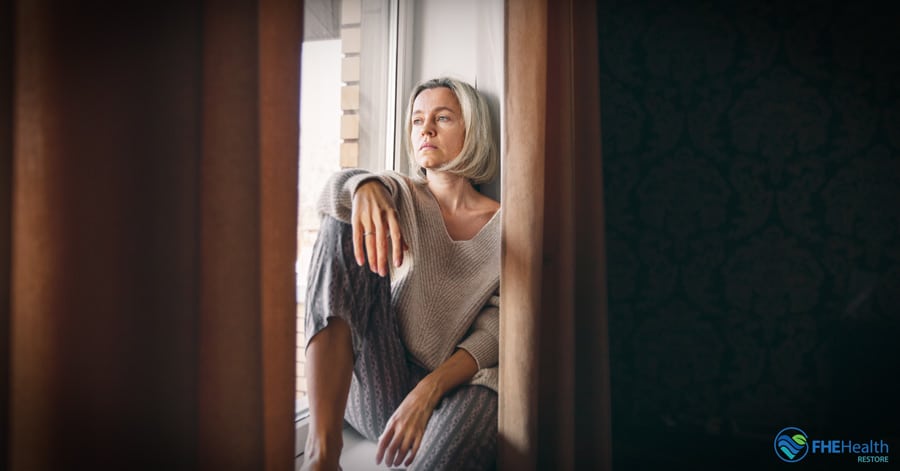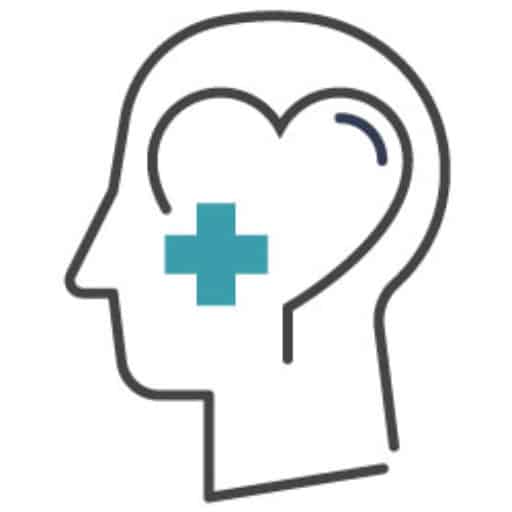It’s no surprise that depression screening is becoming more common in different health care settings. It’s estimated that each year, 9.5% of adults in the United States have a depressive illness. That number is trending upward, but 55% of American adults with mental illness don’t receive treatment.
Getting diagnosed is the first step toward proper treatment, but it’s not always easy to diagnose depression. The condition’s symptoms mirror those of other physical and mental health conditions, and your primary care physician may not have the experience to correctly interpret them. Understanding how to get accurately diagnosed with depression can help you get the right treatment.
Is It Hard to Get Diagnosed With Depression?
Greater awareness of mental illness and the introduction of depression screening tools have made it easier to talk to medical professionals about the condition. However, it can still be difficult to get an accurate diagnosis. There are many symptoms of depression, including:
- Feeling sad or hopeless
- Losing interest or pleasure in activities you once enjoyed
- Significant weight loss or weight gain
- Difficulty sleeping or sleeping too much
- Feeling agitated or restless
- Fatigue or loss of energy
- Feeling worthless or guilty
- Inability to concentrate
- Thoughts of death or suicide
Depression looks different in everyone. For example, some people with depression rarely sleep, while others sleep all day. Doctors have to understand the many ways depression can present.
To complicate a depression diagnosis, the symptoms are shared by many other conditions. This means a doctor may think your depression is caused by something else. You could also be diagnosed with depression when you have another illness altogether.
Health conditions that often get confused with depression include:
- Attention deficit hyperactivity disorder (ADHD)
- Bipolar disorder
- Anxiety disorder
- Premenstrual dysphoric disorder (PMDD)
- Cyclothymic disorder
- Post-traumatic stress disorder (PTSD)
- Vitamin and mineral deficiencies
- Anemia
- Hypothyroidism
- Fibromyalgia
- Diabetes
- Chronic fatigue syndrome (CFS)
Although these conditions have symptoms in common, the treatments for each are very different. This is why it’s essential to get a proper diagnosis.
What Tests Are Used to Diagnose Depression?
Depression screening tests can be used to perform a number of functions during the diagnosis process. Some are used as self-evaluation tools or to determine if further investigation is required. Others help detect the severity of depression. There are also different screening tools to assess specific populations, such as children and seniors.
Available screening tools include:
- Beck Depression Inventory (BDI): A multiple-choice test to screen for depression and measure severity
- Center for Epidemiologic Studies Depression Scale (CES-D): Used in primary care settings to screen for depression
- Behavior Assessment System for Children (BASC): Assesses emotional disorders and behavioral problems in children and adults aged 2-21
- Beck Hopelessness Scale: A self-report inventory that assess an individual’s expectations for the future
- Patient Health Questionnaire (PHQ-9): A self-report test that screens for depressive symptoms
- Geriatric Depression Scale (GDS): Specifically designed to screen for depression in older adults, with a format helpful for those with dementia
Versions of some of these depression screening tests and other self-assessment tools can be found online. Results from these tests can help you tell if you have depression; however, they can’t accurately diagnose the condition. If an online test tells you that you have depression, arrange to speak to your doctor.
What Is the Minimum Score to Indicate Depression?
The minimum score to indicate depression differs depending on the test you’re doing. However, all tests have detailed instructions about scoring that your doctor understands, so they can provide a proper assessment.
Of all the screening tests, the quickest and easiest is composed of just two questions:
- During the past month, have you been bothered by feeling down, depressed or hopeless?
- During the past month, have you been bothered by little interest or pleasure in doing things?
These are actually the first two questions on the PHQ-9 and are known as PHQ-2. If a person answers no to both questions, the screen is negative. A yes to either question means more investigation is required. Studies have found that using PHQ-2 in combination with PHQ-9 if needed is a very accurate way to screen for depression.
If a screening indicates you may have depression, it’s usually best to speak to a mental health professional. They make a diagnosis based on the criteria in the Diagnostic and Statistical Manual of Mental Disorders, known as the DSM. The current edition, DSM-5, says that to be diagnosed with major depressive disorder, a person must have five or more of the listed symptoms present during the same two-week period. The symptoms must represent a change from previous functioning, and at least one must be either depressed mood or a loss of interest or pleasure.
Can My Doctor Tell Me If I Have Depression?
A depression diagnosis from a primary care physician isn’t always accurate. One study found that only 38.4% of people diagnosed by their doctor actually met the criteria for depression. For those age 65 and older, that figure dropped to 14.3%.
Despite this, seeing your primary care physician is the first step in getting a proper diagnosis. They can evaluate your symptoms and rule out other causes. They often run tests for vitamin and iron levels, thyroid function and other physical conditions that have similar symptoms and may look at the medications you’re taking and if you’ve had unusual side effects.
If your doctor suspects that you’re depressed, it’s usually best to speak to someone in the mental health field. For most people with the condition, the best treatment is a combination of medication and therapy. Although your primary care physician can prescribe medications, they can’t offer therapy.
It can be helpful to see a psychiatrist first, rather than a counselor or therapist. As a medical doctor, a psychiatrist can prescribe medication and has the knowledge to fine-tune prescriptions to suit your needs. They often refer you to other professionals for therapy.
In the past, depression has been lumped into one category. Psychiatrists today make distinctions between different types, such as seasonal affective disorder (SAD), chronic depression, postpartum depression and persistent depressive disorder. Defining the exact type of depression you have can help determine the best treatment.
If you think you or someone you love has depression, the most important step is to ask for help. Contact us at Restore Mental Health to talk to a counselor who can help you start building a happier life.



